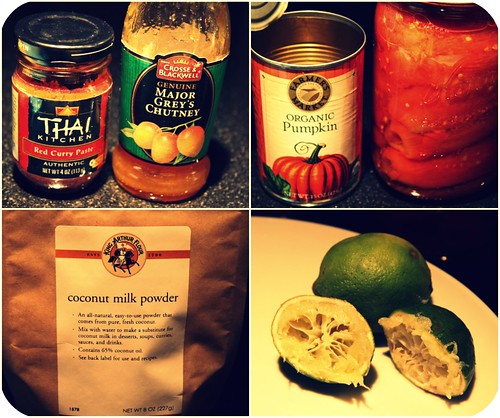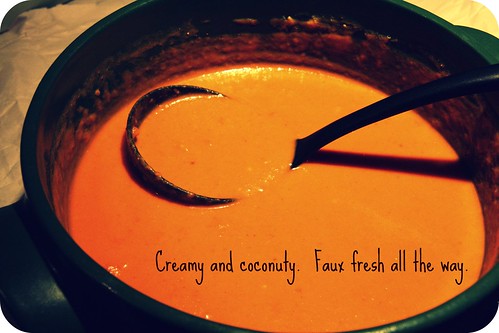One of the classes I taught at Local D'Lish early on was called "Cooking Local Through Winter." It was a fun class to prepare for and to teach. Eating local food is super important to me. But as I tell my students: it's not easy to be a locavore in Minnesota. With few exceptions (hydroponics for one), nothing grows in Minnesota and our neighboring states from about November through April or May. (In contrast to California - where last year our jaws dropped at the amazing selection of fresh produce available at the Aptos farmer's market in January.) Moreover, much of the locally raised meat and locally produced dairy available in the Twin Cities is harder to find once our farmer's markets close up shop for the season.
Over the years my passion, commitment, and practice - both at the grocery store and in my kitchen - have made cooking and eating local foods easier; it comes more naturally to me all the time. It's so natural at this point that I often forget that my husband and I had to take a lot of baby steps to get where we are. Our seven years of CSA membership, our proximity to Local D'Lish and close relationship with its owners and staff, our connection to our co-op, and our easy access to several farmer's markets and farm-to-table restaurants in the community have all contributed to our knowledge about local foods as well as our ability to appreciate and utilize our region's food products in our own home.
Something I try to emphasize in my classes is that in order to eat local foods year-round in Minnesota, you have to shift your expectations about what your meals should look like. Come November, we have to ditch salad greens, fresh fruit, and herbs. This used to be really challenging for me. But several baby steps later, I don't have to eat asparagus or fresh peas in February. Being a locavore is kind of unglamorous in winter. After that first frost, the local produce that we can get our hands on will most likely be preserved: cellared root vegetables, canned tomatoes, frozen berries, dried beans. So long farmer's market, hello pantry.
So today's recipe is a bit of an homage to the pantry. Admittedly, this recipe isn't the best reflection of my locavore aspirations, what with coconut milk, mango chutney, and thai curry paste being key ingredients. (Last I checked they're not produced in the upper Midwest.) That said, I feel less guilty eating preserved foods from across the country (or world for that matter) than I do eating fresh fruit from another hemisphere. As I mentioned earlier, winter is tough. A token few exotic pantry items definitely make preserved tomatoes (canned by yours truly) and cellared or canned squash more enticing mid-season.
Reacquainting yourself with and embracing the practical benefits of preserved foods can be, ironically, refreshing. A well-stocked pantry comes in handy whether you're trying to eat locally or you just haven't made it to the grocery store in a while and you're low on perishables (my case when I threw this together). As this recipe demonstrates, if you've got a handful of versatile things in your pantry, you might end up with a simple soup good enough for company.
The best part: it takes all of 5 minutes active time to make - most of that spent using a can opener - and less than 30 start to finish. Every time I make a version of this I find it really gratifying. You probably will too.
Coconut Curry Soup with Tomatoes and Pumpkin
From my pantry, inspired by an old favorite 101 Cookbooks recipe
Yield: 4 servings
1 28-oz can tomatoes (or 2 lbs fresh tomatoes, coarsely chopped)
1 15-oz can coconut milk (I didn't even have that - used some dried coconut milk from KAF + some water; still tasted delicious)
1 lb cooked or 15-oz can pumpkin, winter squash, or sweet potato*
4 tablespoons (+/-) red curry paste
1 heaping tablespoon apricot or pineapple preserves, mango chutney, or honey (optional)
Salt and pepper to taste
Juice from 1-2 limes
Place tomatoes with juice, coconut milk, and squash or sweet potato in soup pot. If necessary, add water to just cover squash. Season with about 1/2 teaspoon salt. Heat over medium-high heat, bring to boil. Stir in red curry paste and preserves. Reduce heat to low and allow soup to simmer for 10-15 minutes, stirring occasionally. Remove from heat. Puree with an immersion or regular blender until smooth or mostly smooth or whatever. Taste and add salt and pepper. Finish with the lime juice right before serving.
*I have made this with roasted squash and found the sweet, distinct flavor that comes from roasting vegetables is sort of masked by the strong coconut-curry-ness of this soup. So, to keep this a simple, quick-cooking soup, if starting with fresh squash or sweet potatoes, I'd suggest steaming them or even cooking them in the microwave. No need to peel sweet potatoes. Never a need to peel sweet potatoes.



No comments:
Post a Comment